|
Writing an estimate should be a blend of art and science. As an estimator you will utilize equal parts scientific and artistic approach if you want to set yourself apart from the status quo. The Science of EstimatingThe science of estimating includes growing your knowledge base so that you understand what you are bidding, how you will approach the project, and why you use certain items to construct your estimate. In the world of insurance claims mitigation and repairs, this often means learning to utilize estimating software such as Xactimate or Symbility. The science of estimating is all about growing your mindset for success. We have created a series on our podcast called The Xactimate Sessions which reviews some of the resources and approaches to estimating that can help you expand your knowledge base and elevate your skills as an insurance claims estimator. On The DYOJO Podcast we talk about learning to estimate from scratch, resources available from your Xactware license, and habits for improving your estimating game. The Art of EstimatingThe art of estimating includes those habits that will help you stand out from your competition. There is some science in the art form, whereby the habits both help you to be a more consistent estimator as well as methods for composing your estimate in a manner that is understood by insurance carriers, property damage customers, and your production teams that will carry out the restoration work. Many of these mindsets and habits for success are addressed in the book Be Intentional: Estimating by Jon Isaacson, The Intentional Restorer. Some of these elements include:
An Example From An Xactimate EstimateWhat's missing from this picture (Exhibit 1) of an insurance claim repairs estimate written in Xactimate? 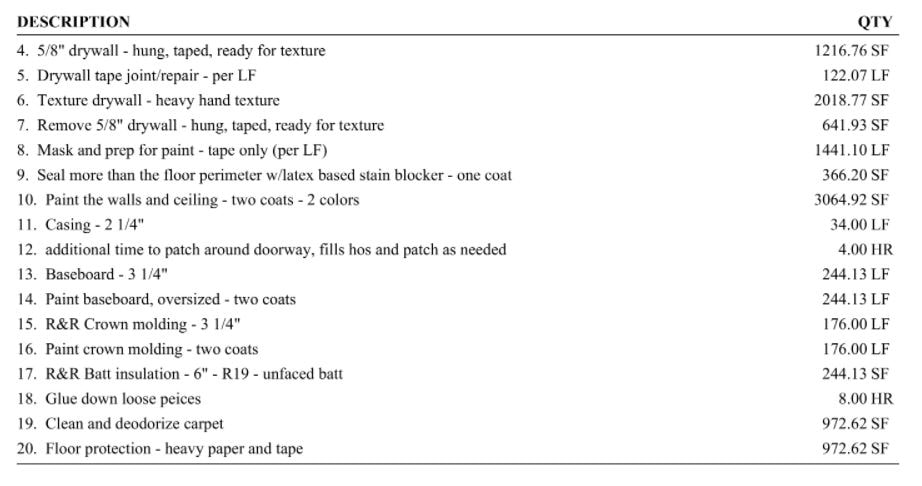 Exhibit 1 - An Xactimate Estimate with No Structure or Headings Exhibit 1 - An Xactimate Estimate with No Structure or Headings I will start out by saying that this example above is not the worst estimate that I have seen. It is probably better than the status quo. Yet, it lacks a few simple things that can help it be better for clarifying the scope, negotiating the claim, expediting the contract, and delivering an executed product. The Importance of Estimating StructureThis estimate is not top-down or in sequence with the way the claim will be addressed. Without changing any of the line items, take a look at a picture of the claim (Exhibit 2) and see how an estimator might approach this scope with a bit more art and science. Where would you start? Most intentional restorers would start with jobsite prep, right? So PREP ITEMS will be our first estimate header and those line items would be in that first category. PREP ITEMS include:
As you compose your line items, you will either write your estimate in a sequence from the top down or the bottom up. You will create headers that give your estimates an aesthetic that leads the reviewer through a guided tour of the damages in each room. Your F9 notes and photos will supplement any line items that create questions for the carrier. - Be Intentional: Estimating, Chapter 17 The Advantage of Estimating ConsistencyAs you can see in Exhibit 3, I have made no line item changes to the prior Xactimate estimate other than to format the structure of the scope with headers. I believe that headers make the scope easier to read for all parties involved in the claim. Having a structure like this helps those who are responsible for thorough data capture at the loss site to consistently gather their documentation in a manner that will be in sync with how the scope will be composed. Estimating structure increases estimating consistency which decreases scope creep on the initial job walk. When you write in a consistent manner, you help yourself to reduce the chance of missed scope details. When you compose in a clear structure you are attempting to minimize the questions that a reviewer might ask. It can be frustrating when you put so much effort into an estimate and silly questions still get asked, but if you continue to work with those entities they will come to appreciate the level of detail that you provide. It is possible to stand out when composing estimates in Xactimate. It may not happen often, but it is always nice to hear someone say, “I really like how your estimate is structured. That’s the first estimate in a long time that had a flow to it that I could follow. You really are the best and there is no one like you. I hope your boss is paying you well because you are worth every cent and more. I want to be like you when I grow up.” - Be Intentional: Estimating by Jon Isaacson If there is enough interest and readers give feedback to the publisher, we may have a follow up discussing legitimate line items from Xactimate that should be included in this estimate. I think the missing items should be clear to most estimators, whether restorers, adjusters, or project managers, who consistently see projects through from start to completion or restoring a structure to resemble it's pre-loss conditions with materials of like kind and quality (aka The Standard). A few of those missing line items would include (but not limited to):
Better Insurance Claim Outcomes Through Better Estimating HabitsPoorly structured estimates show a lack of care and/or expertise. How often have you reviewed an estimate from an adjuster or a competitor that has little structure and is hard to follow? There are so many estimates that look like a grenade full of line items was thrown into the program and exploded. It’s like mystery night when someone extracts all the leftovers from the refrigerator and attempts to make something edible.
How many of you are reading this and know that those same poorly structured estimates are being composed by your hands or those of your team members? Most Xactimate professionals can see the telltale signs of an estimator who is either inexperienced or is lazy in their estimating habits:
If you are lost or this is the first time you are hearing of such things, please refer to another article I wrote titled The Three R’s of Mastering Xactimate for more guidance.
0 Comments
AEML Winter Break 2022-The Florida Technical Conference on Mold - Promo Video from The DYOJO To all our friends and peers in the restoration industry who deal with mold assessment and/or remediation, what better excuse is there to get your butt to Florida in January than to network with some of the leading minds in this area of expertise?
As the OG Intentional Restorer, aka The Restoration Global Watchdog, Pete Consigli says, "Be there or be square." Receive all 14 Florida MRSA/MRSR CEU’s in one weekend while enjoying leading industry speakers, sponsors, and so much more!
Subject Matter Experts and Nationally Recognized Leading Authority Speakers addressing the 2022 Winter Break Conference theme of the 4 M’s, “Moisture, Materials, Mold & Methodologies" January 27th-29th 2022 Schedule & Ticket options
Registration Times for Event:
Location
 My latest book, So, You Want To Be A Project Manager? was going to be my shortest book. I had planned for it to be a primer on the mindset and habits for growth in project management. But more words turned into more pages which spilled into more chapters. Honestly, my first draft was a MESS. The concepts were even more eclectic than this revised version. Thankfully some good friends gave earnest feedback and constructive criticism which helped me to strip things down to this current form. Having a good peer network is a great resource for your personal and professional development. I was glad to be able to incorporate insights on project management from everyday restorers throughout this book. One such restorer is David Watts, who was involved in the intricate 2019 fire restoration for The Cathedral of St. John the Divine in Manhattan. When I asked him about some of the mindsets that have helped him to be successful in project management. He replied, Mindsets for Success in Project Management
When I asked David about some of the habits that have helped him to be successful in his roles, he shared the importance of the PLAN (which is an element of SPEeD). The project manager must create a process for clear and consistent communication. The PLAN includes customer expectations, resource allocation, budget, problem-solving, and transparency. David says that once the project is assessed (SCAN) the following needs to be communicated early and often to keep EXECUTION on track. Habits of Successful Project ManagersDavid Watt's shared the following:
Early Reviews for This New Project Management Book“I like what I saw from the mediocre book. Jon puts into words things veterans of the industry should know and shortens the learning of those new to the industry. Most of us learn by on the job training with some guidance. His books provide guidance for those willing to take the next steps at raising their knowledge.” - David Watts (New York, NY)
In August, we published an announcement in Restoration & Remediation (R&R) Magazine that we were looking for new project managers to sent copies of our third book to: Jon Isaacson is wrapping up the first draft of book number three in the Be Intentional series titled, So, You Want To Be A Project Manager? Isaacson is looking for feedback from new project managers; those who have been in the role for a year or less. If you are a new project manager, Isaacson is sending out 10 advance copies of the book. This will be once they are printed. The target publish date is the end of October 2021. Isaacson has created a sign-up portal. We received a great response from many more than ten project managers, training managers, and property restoration owners who were excited about the content of our book. This created some internal excitement at The DYOJO as it affirmed a need for some assistance in this area. So, You Want To Be A Project Manager? is a book about the mindset and habits for growth in the roles and responsibilities of project management. As we stated in our release through Cleaning and Restoration (C&R) Magazine, we wanted feedback from project managers: If you are a training manager and need some help inspiring as well as challenging your team, I think you will find this book to be of value to your efforts. Mindset and habits for success in project managermentThe DYOJO is following through on their promise and these applicants will be receiving a FREE copy of our third book. We hope they will enjoy the book, put the principles to work, and provide us with some good feedback (including Amazon reviews and social media posts - hint, hint). The awardees are:
Training and leadership development for project managersAs soon as my author copies are in, I will be sending the 10 copies of our latest book, So, You Want To Be A Project Manager? to our 10 winners.
I hope you will all find this book to be helpful to you in your personal and professional development. If you want to help us promote the book, you can do a few simple things: 1. Please post a picture of yourself with the book for social media - this will help us get the word out. We are about as low budget as it gets with regards to marketing, so your post will help us boost that effort. 2. If the book is worthy, please post a review on Amazon, this helps the book searchers to find and have confidence in purchasing the book for themselves. 3. If you really enjoy the book, please subscribe to The DYOJO Podcast. We post on Thursdays at 9am PST - you can WATCH via YouTube or LISTEN via Spotify or Apple. 4. Let us know if you and/or your organization would be interested in setting up a zoom call or in person training on the mindset and habits for growth in project management.
People in a position of leadership are judged by bringing money in and making money on that money. We will discuss some of the differences between revenue and profitability later. For now, I want to focus on those factors that lead to profitability, namely the mastery of people skills with project management and customer satisfaction.
Of the twelve items listed above, all of these require building a team to help you achieve these goals. There is so much focus on the numbers, when it's the people, particularly the people directly interacting with your clients, that facilitate profitability through doing things right, doing them efficiently, and putting a touch of excellence on what your company does. Charles Cassani was the recipient of the distinguished Martin L. King Award for 2020. This award is presented to individuals who are recognized for their exceptional service and dedication to the restoration industry. Charles notes that more emphasis should be placed on the PM process. “I recognized back in the late 1990’s that my best project manager needed a coordinator/assistant to record and document his activities.” Charles began adjusting the way his company approached the roles and responsibilities of a project manager. By distributing the load they saw better outcomes. “In our company,” continues Mr. Cassani, “We support PMs with project coordinators, billing support administrators who proof and coordinate billings with TPAs, TPCs, and Customer Relations Specialists.” With competent help project managers are better able to service the customer and achieve the company goals. We expand on these pinciples in my new book, So, You Want To Be A Project Manager? Mindset and Habits for Growth. Mr. Cassani contributed these insights and shared this early review of the book, "I liked most of what I read." You can purchase the book in Kindle, Paperback, and Hardcover through Amazon. Overhead and Profit (O&P) in Xactimate Line Items?Is it true, there is no O&P in the Xactimate repair line items? Xactiamte trainer and estimating guru, Ben Justesen, joined The DYOJO Podcast to discuss this topic and more. On Xactimate Sessions File 005, Ben responded, "This is a good question. Whether you realize it or not, it's a little bit loaded. When I when I think of overhead and profit (O&P). as a markup, that markup is not included in the Xactimate line items." The Difference Between Markup & Profit for Insurance Claims EstimatingWhat is markup? You have your line items coming together to form the cost of your scope. You add a markup, which in the insurance industry is often considered this arbitrary 10% overhead plus 10% profit (aka 10 and 10). This add-on to the end of your Xactimate estimate is your markup. Markup doesn't actually give you a guaranteed profit margin, which is what you actually take away from the project once you've paid for the work and the cost of goods sold. In simplified terms:
"However," remarks Mr. Justesen, "That markup is only a portion of the margin that you would need. So there is some margin in the line items themselves. But it's on a certain component. That's the labor component. There's are no margin on materials, there is no margin considered on equipment. So the margin that you have to consider is on the labor." in addition to running a multi-site restoration company out of Moses Lake, Washington, Ben also has created the Enlightened Restoration Solutions (ERS) course to help insurance claims estimators elevate their skill sets. He is the leading proponent for encouraging restorers to make their own pricelist within Xactimate and teaches them how to effectively do so. He reminds contractors that if all they rely upon is the 20% markup added to their estimate, they will struggle to cover their true overhead costs or meet their actual profit margin goals. If a restorer sticks to a strict 20% markup, they need to understand they are only netting a 16.67% margin. 20% Markup is only 16,67% Margin for Restoration EstimatesI will try to do this justice. This is something Ben justesen demonstrated when I attended his ERS course. If you watch the video you will notice that I am using the legal pad from the Law Offices of Edward H Cross, aka The Restoration Lawyer. Another resource like to shout out is The Book on Restoration Collections by Ed Cross. This book is available through their website and is designed to take the mystery out of collections for insurance claims.
Restoration professionals hear all the time that 20% overhead and profit (O&P) is more than enough. But, you and I know that this is actually only 16.67% margin. I will demonstrate how:
Why is this? That is because if we had an invoice from a subcontractor for $1,000.00 and the gracious insurance company allowed us to mark that invoice up by 20%, we would then be charging $1,200.00. From our $1,200.00 we pay our sub $1,000.00 and we are left with $200.00. Our $200.00 is only 16.67% of the $1,200.00 that we charged. So, not only did we NOT get at least 20% (which is far lower than ANY insurance company makes as an overhead and profit margin), we also likely had to wait on the money so the insurance and the client allowed us to finance the payment interest free while they waited to pay the $1,200.00 so that we could recoup what is left of our $200.00. Most restoration companies, most contractors, and most insurance companies have a higher profit margin goal than 20%. This markup can really drag those margins down on your individual projects and your overall goals for the year. If you're only getting a 20% markup on the front end, it can really skew your margin on the back end. |
Words
The DYOJO - helping contractors shorten Archives
June 2024
Categories
All
EstimatingMarketingInsurance ClaimsLeadership |
|
| |||||||

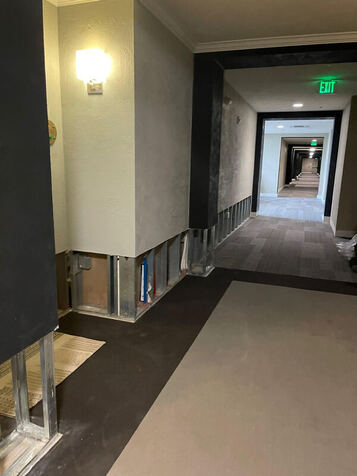
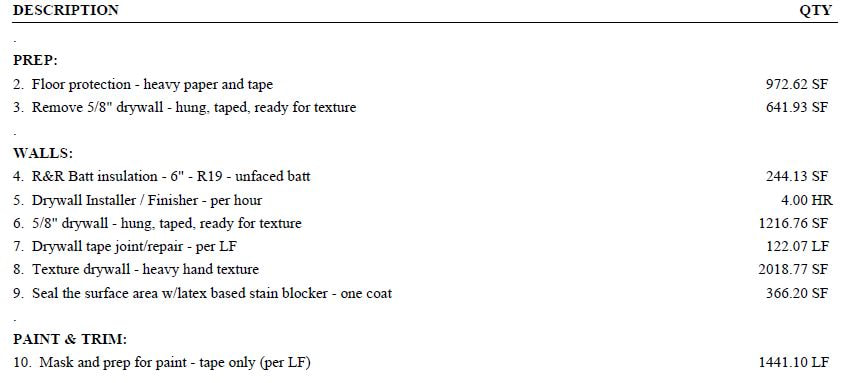
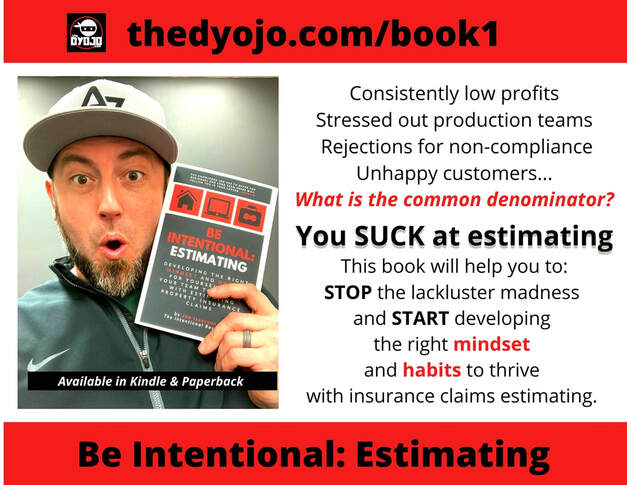
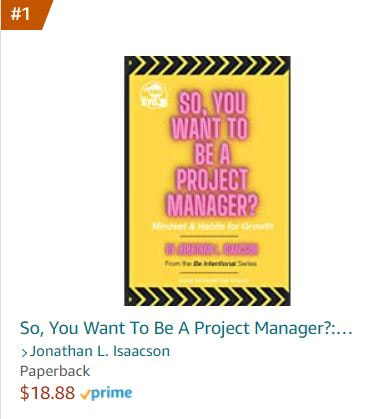
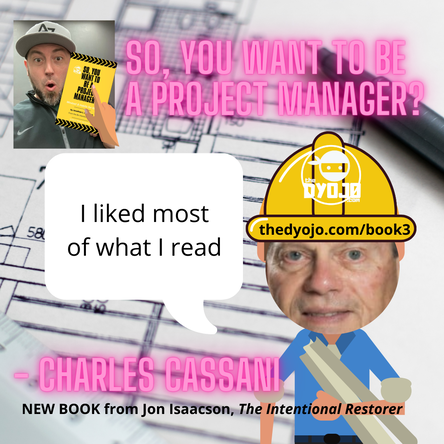
 RSS Feed
RSS Feed
